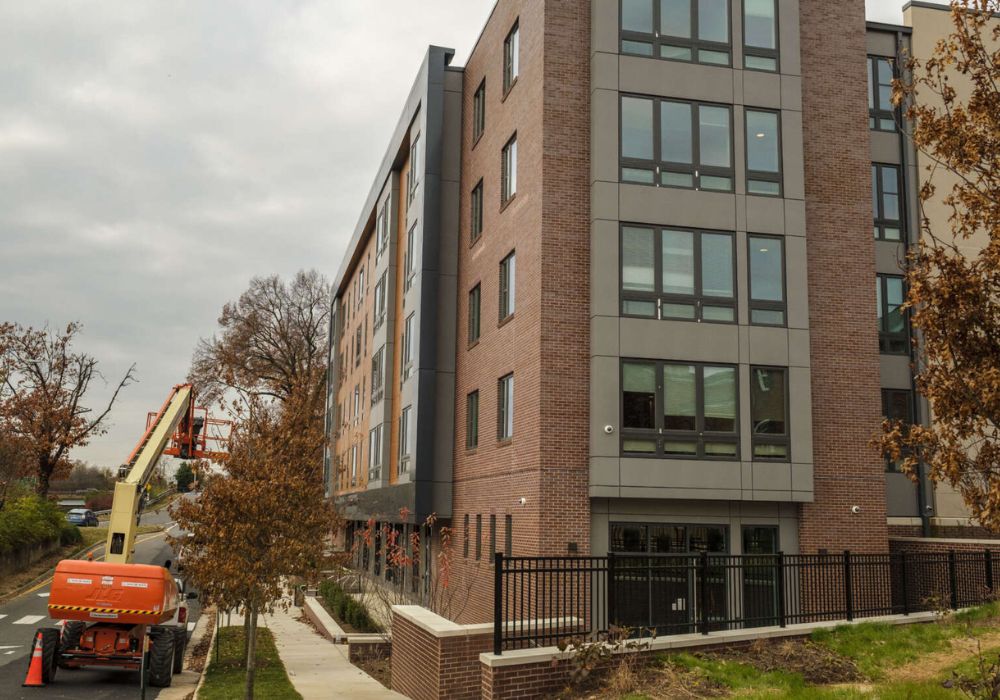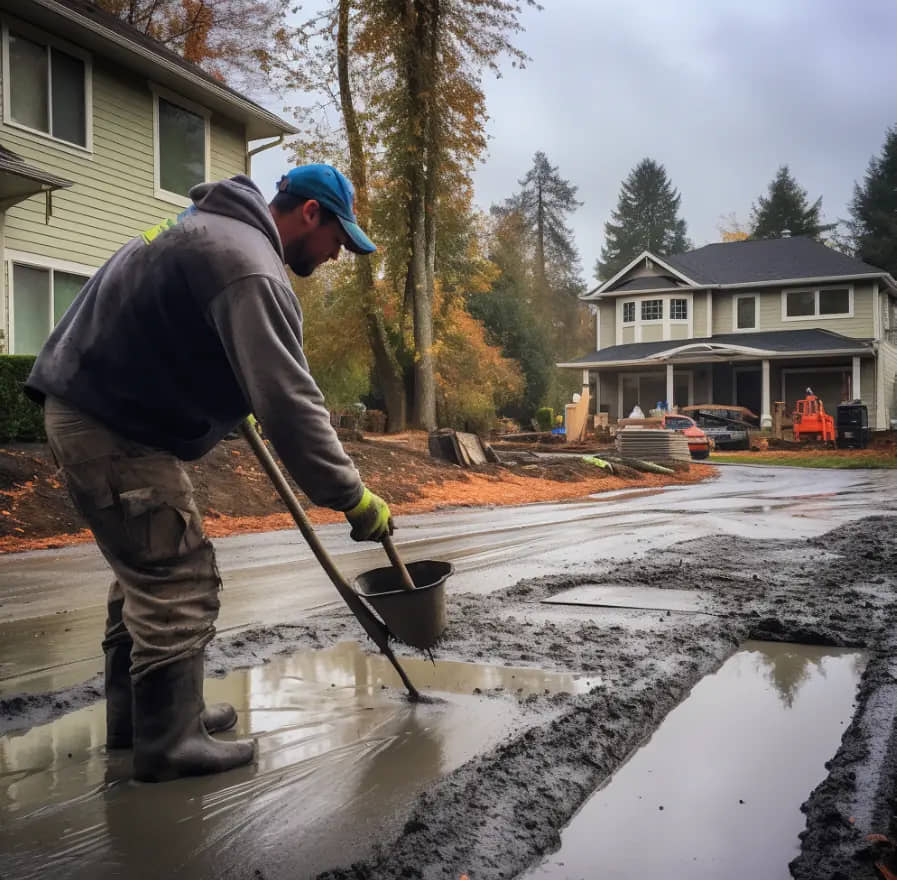Are you wondering how long does it take to paint a room? Painting a room can be a time-consuming process that requires careful planning and execution. On average, it takes between 5 to 7 hours to paint a room, but this figure can be influenced by the aforementioned factors. In this article, we'll explore how each of these factors can impact the time it takes to complete a painting project and provide tips to help you paint your room efficiently.
Preparation: 1-2 hours
The first step in any successful painting project is preparation, which can take anywhere from one to two hours depending on the size of the room and the amount of furniture and decor in it. Don't be tempted to skip this step and jump straight into painting – you'll end up regretting it! Proper preparation includes moving furniture, covering the floor, removing fixtures and items from the walls, and using painters tape to protect baseboards and frames.

Outlining: 1 hour
Next, spend another hour outlining the places where your roller won't reach effectively, such as corners and edges. To make this process easier, consider using a flat platform bench to reach high places, and use a paintbrush with angled bristles to get into tight spaces. Don't forget to liberally apply painter's tape to protect areas you don't want to paint, and invest in a sturdy paint cap with handles to prevent spills.
Painting: 2-3 hours
The task of painting the majority of the walls is expected to take around 2 to 3 hours. While it's the most time-consuming part, it's also the simplest and most straightforward step of the process. Since you're dealing with wide-open spaces, you can let your creativity flow and not worry too much about precision until you approach the edges and baseboards.

To expedite the room painting process, it's advisable to acquire a large roller, ideally ranging between 14 to 18 inches. Additionally, investing in an extension rod can enable you to reach higher sections of open walls, thereby ensuring maximum coverage. By having the appropriate equipment, you can seamlessly execute the painting task, resulting in significant time savings.
For an even and vibrant finish, it's recommended to apply paint in layers. Begin by laying down a solid coat across the entire space and then proceed to apply another layer over the area. This approach guarantees uniformity in color and eliminates the possibility of some sections appearing dull compared to others.
The duration of the painting process is dependent on the room's size and can range from 2-3 hours. With more experience, the time taken to paint will decrease as you become more proficient in the process.
Clean Up: 30-60 minutes
The final step of the room painting process is relatively relaxed, and it involves cleaning up the workspace, which should take approximately 30 to 60 minutes. Start by removing any painter's tape, cleaning any tarps or ground coverings used, and sealing and storing the paint cans.
Although it may be tempting to rehang pictures and fixtures on the freshly painted walls immediately, it's best to wait for about 48 hours to allow the paint to dry completely. Even if the paint appears dry to the touch, hanging things too early can cause the paint to crack and dry unevenly. Overall, cleaning up after the painting process should not take more than an hour, perhaps even less.
Tips: To clean up after painting a room, it's a good idea to have a damp cloth ready to quickly wipe away any drips before they dry. If you notice any recently dried drips on a nonporous surface, you can try wiping them off with a wet cloth or by using mineral spirits or paint thinner.
Other Considerations
The method you use to apply paint to a room can significantly impact the speed and quality of the painting process. To maximize efficiency, it's recommended to use a roller for the walls and ceiling and brushes for corners, edges, and trim. Rollers enable quick coverage of large surfaces, while brushes provide precision in smaller areas. To achieve the best results, ensure that the paint is evenly distributed and that roller marks are avoided.
Application Method Matters
While using a paint sprayer can be a faster option, it's essential to note that sprayers can result in paint getting everywhere, making them unsuitable for indoor room painting. However, if you do choose to use a paint sprayer, take the necessary precautions, such as covering all surfaces to protect them from overspray.
Additionally, to avoid mistakes that could prolong the painting process, consider removing any furniture or objects that could impede your painting movement or become stained by paint. Taking the time to prepare the room adequately by covering floors, furniture, and any surfaces that should not be painted can also save time in the long run by preventing any unwanted messes.
How Many Coats?
If you're simply touching up white walls, a single coat of paint may suffice, and you can complete the job relatively quickly. However, if you're changing colors or the walls are in bad shape, applying a primer before painting can make your new coat of paint look much better. Keep in mind that using a primer will add an extra hour or two for drying time.
If you're painting over very dark walls, you may need to apply a second coat of paint, which can add a considerable amount of time to the process. Remember to allow 4-6 hours between coats for the paint to dry. While adding extra coats can improve the overall appearance, applying too many can lead to a thick layer of paint that takes longer to dry and increases the chances of drips and uneven patches.
FAQs about How Long Does It Take To Paint A Room
What is the best thing to wash walls with before painting?
It's best to use a solution of mild soap and lukewarm water, applied in a circular motion, to clean the walls. To rinse, use a slightly damp cellulose sponge. It's essential to ensure that the walls and trim are completely dry before applying painter's tape to avoid any issues during the painting process.
Can I paint a room in one day?
Yes, it is possible to paint a room in one day, but it largely depends on the size of the room, the complexity of the job, and your level of experience. A small or medium-sized room with simple walls and no intricate details can be painted in a day, especially if you have some experience with painting.
How Much Paint Is Needed for Walls?
To calculate the amount of paint needed to cover the walls of a room, you first need to measure the length of all the walls and add them together to get the perimeter. Then, multiply the perimeter by the height of the walls to get the total square footage of the room. Finally, divide the square footage by the approximate coverage of one gallon of paint, which is usually around 400 square feet per gallon.
For example, let's say you have a room that is 12 feet wide by 12 feet long, with walls that are 8 feet high. The perimeter of the room would be 44 feet (12+12+8+8=44), and the total square footage of the room would be 352 square feet (44x8=352). To calculate the amount of paint needed, divide 352 by 400, which equals 0.88 gallons of paint for one coat of paint on the walls.
Is 1 gallon of paint enough for 2 coats?

The coverage you can get out of one gallon of paint is approximately 400 square feet, which is equivalent to painting a small bedroom or bathroom. However, it's important to note that most rooms require multiple coats of paint for optimal coverage and durability. If your room needs two coats of paint, you should expect to get around 200 square feet of coverage per gallon.
It's always a good idea to buy a little extra paint to account for unexpected factors such as textured walls, uneven surfaces, or wastage.
What to do if you mess up a paint job?
In case you make a mistake during a paint job, there are a few steps you can take to fix it. Begin by lightly sanding the affected area with 150-grit sandpaper, and then use a cloth to remove any dust. Next, reapply the paint to the area while making sure to maintain a "wet edge," which means you should avoid letting the paint dry before finishing the entire wall.
Do professional painters clean interior walls before painting?
Before starting an interior paint job, it's common for professional painters to thoroughly clean the walls. This step is essential to ensure that the resulting paint job is both visually appealing and durable. This process typically involves removing any dirt, dust, or old paint chips, as well as filling in any gaps or cracks in the wall surface using caulk or putty. Applying primer to the walls before painting is also recommended to achieve optimal results.
Conclusion
In conclusion, painting a room can be an exciting and cost-effective way to revamp your home. By utilizing the right painting tips and techniques, such as properly preparing your walls, choosing the right paint and tools, and working systematically from top to bottom, you can achieve a professional-looking finish that will last for years to come.
With the right tools and experience, painting a room can take as little as 5-7 hours. So, if you're wondering how long does it take to paint a room, it ultimately depends on the size of the room and your level of experience.





